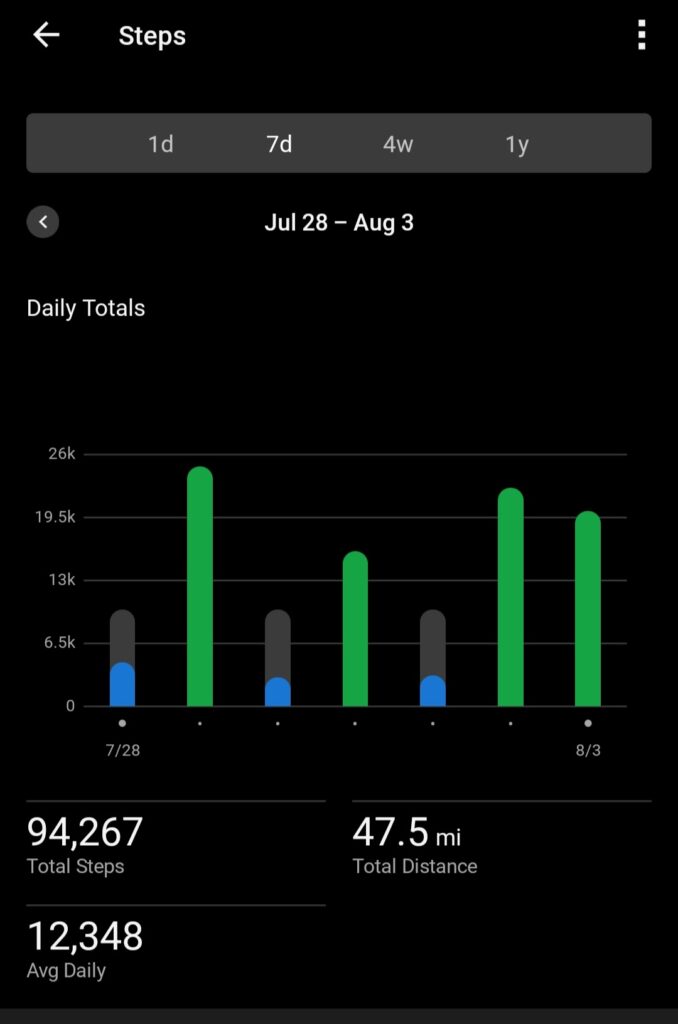
We found an interesting article on CMU.FR. As many people know, there is a recommended benchmark that you should try to walk or run at least 10,000 steps a day. According to CMU, this 10,000-step figure comes from a 1960’s Japanese marketing campaign in which they were selling pedometers. It is amazing that this campaign is the basis for our current minimum daily health goals.
For those of us who vary our exercises, we have always wondered what this 10,000 step would correlate to in other activities. We start with what the health benefits are from walking 10,000 steps. If we use calories, then the 10,000 steps is roughly 5 miles and typically someone would burn between 300 and 400 calories walking 10,000 steps (depending on your body weight). An average person would walk the 10,000 steps in about 1 hour and 40 minutes.
For years, the question of how much cycling equals the famous 10,000 daily steps has sparked debate among both walkers and cyclists. But the scientific answer will surprise most people: only 24 minutes of cycling at roughly 12.5 mph matches the health benefits of that well-known daily walking goal.
Using this as a basis, you can achieve the same health benefits as walking 10,000 steps as follows based upon the analysis prepared by our friends at ODS:
- Cycling: Riding a bike for 30-60 minutes can be comparable in terms of cardiovascular benefits. Cycling at a moderate pace (12-14 mph) for 35-40 minutes can roughly match the benefits of walking 10,000 steps.
- Running: A 30–60-minute run can provide similar health benefits. Running is a higher-intensity activity, burning roughly double the calories of walking the same distance.
- Swimming: Like cycling, swimming is a low-impact activity that offers comparable benefits to walking. If you swim a moderate pace, you can achieve reach the health benchmark in about an hour.
- Elliptical Trainer: Using an elliptical machine for 30-60 minutes engages both upper and lower body muscles, potentially burning more calories than walking in the same time frame.
- Hiking: Hiking for 45-60 minutes can be an excellent alternative, especially when hiking uphill, as it engages major muscle groups and increases heart rate.
- Dancing: A 40–60-minute dance or step class can provide similar benefits, improving coordination and balance.
- Tennis: Playing tennis improves response time, muscle tone, and strength while boosting fitness. You can achieve the benchmark in about an hour of singles tennis and about an hour and 40 minutes playing doubles.
- Jumping Rope: This activity is easier on the joints than running while effectively raising heart rate for cardiovascular benefits. Based upon the speed of jumping rope, it would require 40 to 60 minutes to achieve the benchmark health results.
- Strength Training: Lifting weights or doing resistance training not only builds muscle but also improves bone health and balance, contributing to overall fitness but it would take between 1 hour 15 minutes and 2 hours to achieve the same health results.
- Kickboxing: This high-energy workout burns calories, boosts cardiovascular fitness, and improves coordination. With such an intense workout, you can hit the benchmark in 35 minutes.
- Squash: This highly intense racket sport burns calories as one of the fastest sports we see. It will take less than 30 minutes to achieve the benchmark results.
If you want to achieve the general and personalized health benchmarks, you can take various approaches. You do not always need to walk 10,000 steps each day. You can vary your routine with other activities and still achieve the desired results.
